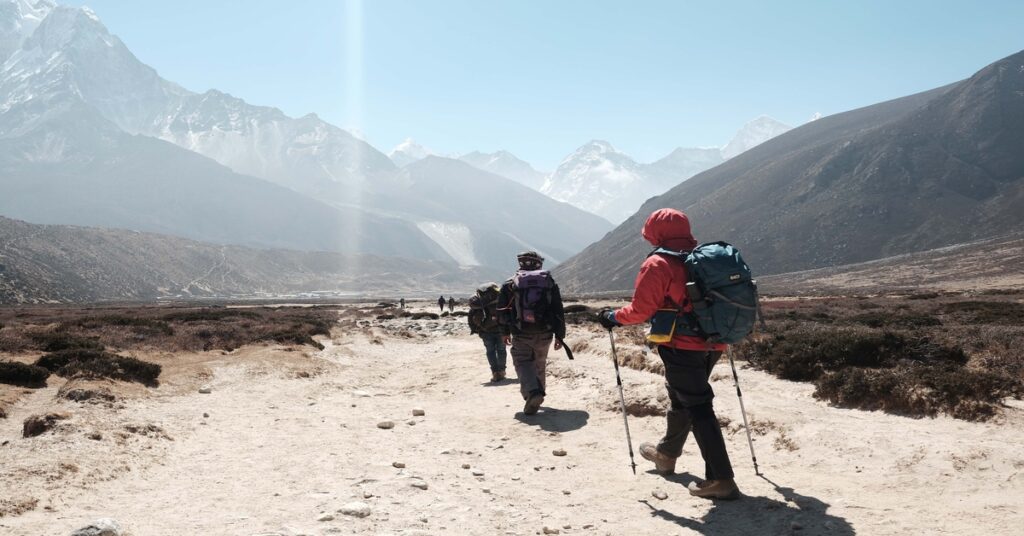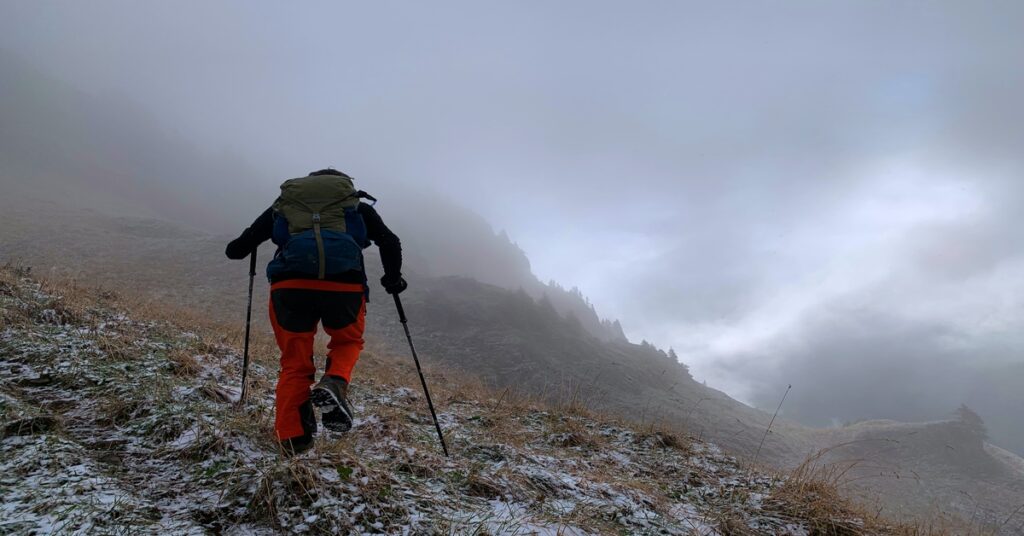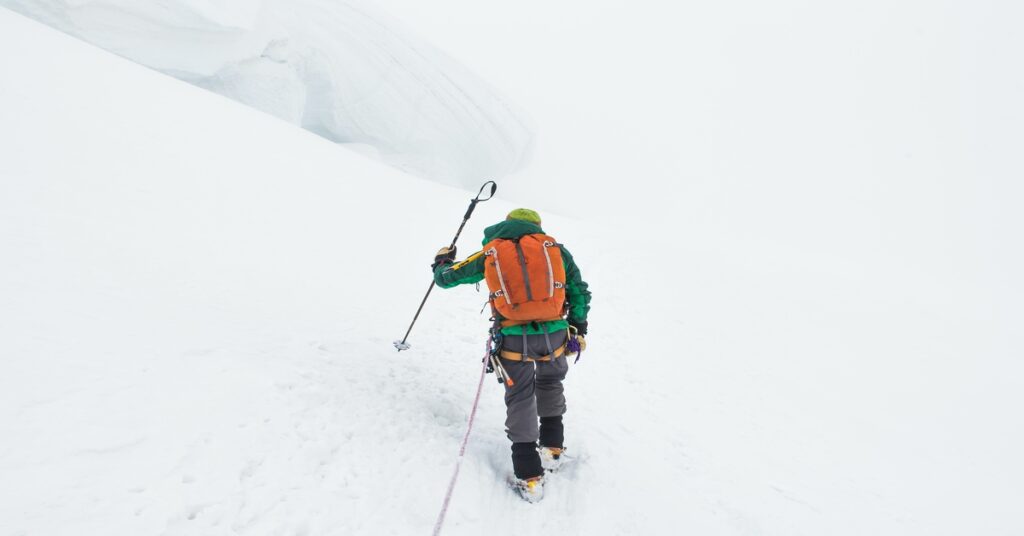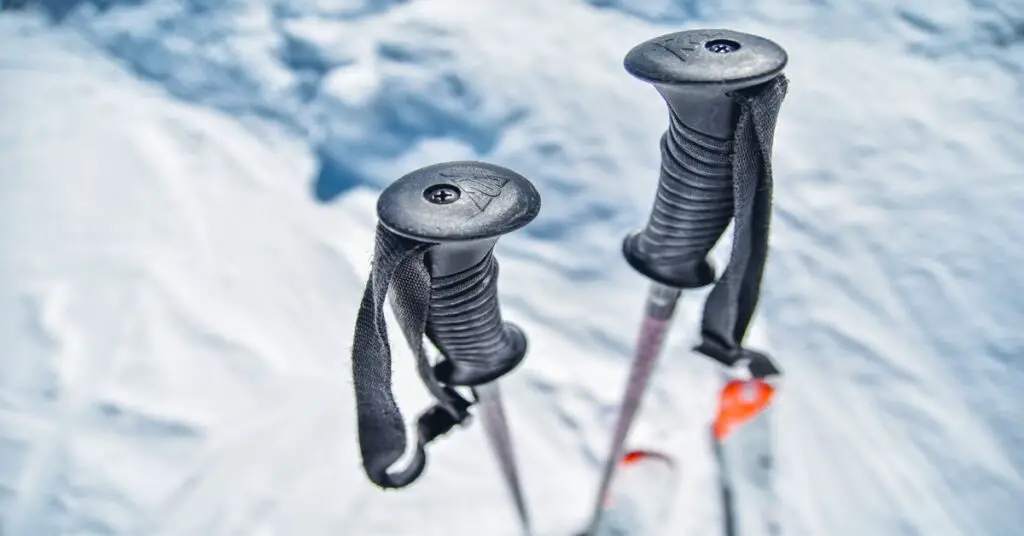Do I need trekking poles? This is a question many backpackers ask themselves before heading out on a hike. If you regularly go on hikes, you have probably met many hikers and backpackers with a pair of trekking poles.
Why Use Trekking Poles?
Trekking poles have become popular over the past few years. Some people think this is just a trend in the hiking community, but it’s not. People are not acquiring hiking poles to fit in. This piece looks at 9 reasons why you should use trekking poles.
1. Help Clear The Trail
Some parts of a hiking trail may have thick undergrowth. Such obstacles can make you fall and injure yourself, so it’s important to have something to get them out of the way.
And it’s not only the dense undergrowth we’re talking about here. You will occasionally come across thorns or plants like stinging nettles and poison ivy, which can ruin your hiking experience. If you fear spiders, you wouldn’t want any of those huge scary spider webs to touch you. With trekking poles, you can quickly push aside these things and continue with your hike.
2. Determine Water Depth
They are useful when you are on a terrain with a couple of streams or rivers. Without trekking poles, you will be forced to look for a stick to check water depth each time you want to walk through a body of water.
Trekking poles allow you to check them instantly when you reach a water crossing. You can also use them to determine the ice’s thickness before crossing a frozen stream.

3. Put Less Stress On Your Joints
It’s one of the main reasons why hikers use trekking poles. Since it is a weight-bearing activity, hiking can be tiring, especially if you are on an uneven terrain that involves going uphill and downhill every few minutes.
Walking strains your lower body, and hiking poles help shift some weight to the upper body (arms and shoulders). This way, they reduce the shock and pain on your legs as you walk. There are many hikers whose hands swell as they walk. One can avoid this when using hiking poles because they improve blood circulation, thus preventing your hands from swelling.
4. Improves Your Balance
There’s nothing more important than having a good balance when hiking on rugged terrain in the backcountry. Medical experts agree that walking poles provide stability. Walking with poles is like adding an extra pair of legs. Balance is needed when going upslope, downslope, crossing a stream, walking through boulders, mud, sand, snow, and areas where strong winds are blowing. The use of hiking poles will ensure you maintain your balance and avoid falls.

5. You Hike At A Faster Pace
If a hike will take a whole day or several days, then time is of the essence. You wouldn’t want to waste a second on the trail lest nightfall catches up with you. With poles, you can maintain a rhythm as you walk, and this is instrumental in pushing you forward (particularly on upslopes) and increasing your speed.
6. Scare Away Wild Animals
You never know what type of animals you will encounter in the wilderness. You need to be prepared at all times. In the All You Need To Know About Hiking article, we talked about carrying a bear spray if you’re walking in a region with bears.
Now, how do trekking poles scare off wild animals? If you come across large animals like mountain lions and bears, you can bang the poles together or against a rock or tree surface to create a loud sound. In most cases, this will make these animals go away.

Alternatively, you can hold the poles over your head to make yourself look bigger. Most wild animals will not confront an opponent that looks larger than them. These are solutions you can use if the encounter was inevitable. But always try as much as possible to avoid getting noticed or going too close to a wild animal. Just stay afar and mind your business.
7. Your Arms Won’t Be Idle
Having something to hold onto as you walk is beneficial. How? We all know it is the lower body that usually benefits most when walking. Your arms are usually free. Hiking is a fun activity, but you also need to exercise while at it.
Holding onto trekking poles and constantly digging into the ground provides exercise to your arms and builds your arm muscles. As we’d mentioned earlier, many hikers’ hands swell when going uphill because of blood accumulation. When using hiking poles, there’s better circulation of blood, and swollen hands won’t be a problem anymore.
8.Good For Weak Ankles/Bones
Hiking poles can provide support to people with bad ankles/knees. Some people may have permanent injuries or diseases like osteoarthritis that make long-distance walking a painful experience. When using trekking poles, they can significantly reduce the stress on their joints shift.
This helps them cover more distance and enjoy hiking. Another situation where you will need these poles is when you injure a leg during the hike. Hiking poles will not only provide support but also relieve the pain as you continue walking.

9. Can Help With Shelter
A significant number of hikers carry a shelter, even when they are going for day hikes. Stopping to rest, especially during sunny days, can be refreshing. Trekking poles are multipurpose, and you can use them to support your tent in place of tent poles. There’ll be no need to carry tent poles when going for a hike.
Disadvantages Of Trekking Poles
You are now conversant with the numerous benefits of trekking poles. But there are cons.
First, some hikers believe that one uses more energy when holding and pumping the trekking poles into the ground as they walk. I agree with this, but as much as hiking is a fun activity, you should also view it as a workout. Hiking as a form of exercise benefits the lower body. Why not exercise the arms as well?
Secondly, trekking poles can be annoying because there are situations where you won’t need them, and you will have to put them in the backpack. For instance, when you reach a place in the trail where you need to do some rock climbing, the poles will limit you. Some hikers hate that they have to pack and remove the poles repeatedly when on a hike.

One more drawback is that you will have to place the poles in the backpack when walking through easy, flat terrain. Many hikers typically use trekking poles only when going uphill and downhill and thus view trekking poles as extra weight.
Things To Consider Before Buying Trekking Poles
Grip Material
- Rubber – grips made of rubber are more affordable and last for a long time. However, when hiking in warm weather and your hand becomes sweaty, they’re uncomfortable and can cause blisters. This shouldn’t be your first choice.
- Foam – provides a soft touch, which makes it more comfortable than rubber grips. The only problem with this material is the fact that it wears away within a short time.
- Cork – many experienced hikers recommend cork for grip material. It is durable, comfortable, and removes moisture from the hands during a hot day. It’s costlier than other grip materials, but it’s worth every penny.
Shaft/Pole Material
- Carbon – carbon fiber is a durable and lightweight choice. It’s the best choice for lightweight hikers who like walking long distances with the poles packed until they reach a terrain that requires their use. Keep in mind that this isn’t the best choice if you mainly use hiking poles for balance because carbon fiber snaps under pressure. Further, it costs more than aluminium.
- Aluminum – this is a lightweight metal that can be used for a long time. When, for instance, a hiker is trying to regain balance and a lot of pressure is applied to the aluminum, it will bend rather than break. It’s also less costly. Perhaps the only con of aluminium poles is that it is heavier than carbon, which means more weight when stashed in your backpack.

Trekking Pole Tips
- If you want easy to pack poles, go for foldable poles. You can unfold them effortlessly when you need to use them. Note that this is a great choice if you use planes regularly as they will easily fit in your travel bag.
- Opt for lightweight poles if you are a lightweight backpacker. Carbon fiber pole material is suitable for this.
- To gain more stability, use adjustable poles. This type allows you to increase the length when going downslope and decrease it when on an upslope terrain.
- Consider acquiring a hiking pole that comes with a camera mount below the handle if you are a photography enthusiast. This way, the hiking pole functions as a monopod.
- If the trail you are going to only requires a certain pole length, it makes sense to go for a non-adjustable pole of the right length.
- To ensure comfort with any pole length you are using, ensure your elbow is at 90 degrees when holding the pole.
- By using wrist wraps, you can achieve a loser grip and be more comfortable holding a hiking pole. Put your hand through the strap and create an O-shape with your forefinger and thumb. You then move the strap down the pole’s handle. Wrist straps help reduce pressure on the wrists and make the poles look like a part of your body. Thus, they help you reduce the amount of energy used (especially when going uphill).
- Go for shock-absorbing trekking poles if you want to reduce shock when going downhill or if you have joint issues.
Conclusion
Clearly, the advantages of trekking poles far outweigh their disadvantages. So, getting a pair would make your hike more comfortable and exciting. Have you been using trekking poles? Do you know some trekking pole tips not discussed in the article? Mention them in the comments section below.

